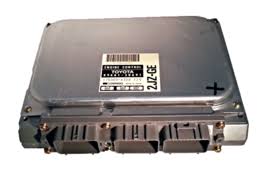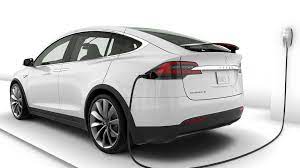Major Causes of Car Brain Box Damage and How to Avoid It?

As an important control center, the car brain box organizes the harmonious symphony of vehicle functions thus the question: What are the major causes of damage to the car brain box? These include Voltage Spikes and Fluctuations, corrusion and rust, Overloading, and Voltage Spikes and Fluctuations
However, lurking in the shadows is a threat to this technological miracle, which can cause serious damage to its delicate circuits and components. Understanding the main causes of car skull damage is not just a curious question, but away to avoid it
What are these hidden perils that can spell disaster for your car brain box? From electrical surges to environmental factors, the list is as diverse as it is daunting.
Yet, fear not, for knowledge is power, and armed with the right information, you can shield your car brain box from harm’s way.
In this article, we delve into the depths of car brain box damage, unraveling its mysteries and offering practical tips to steer clear of trouble. Stay tuned to learn how you can be the guardian angel of your car brain box, ensuring its longevity and reliability on the road.
What is a car brain box?
The car brain box ECU, commonly known as the car brain box, serves as the nerve center of modern vehicles, overseeing crucial functions like engine management, transmission control, and emissions regulation. Without it, the vehicle’s performance would be severely compromised.
The ECU plays a pivotal role in ensuring optimal engine performance, fuel efficiency, and overall vehicle operation. It continuously monitors various sensors and adjusts parameters accordingly, facilitating smooth and efficient driving experiences.
Common Causes of Car Brain Box Damage:
Despite its critical role, the Car Brain Box is susceptible to damage from various sources, ranging from environmental factors to mechanical stress and operational practices. Understanding these factors is crucial for maintaining the health and longevity of the ECU.
Emphasizing the Importance of Preventive Measures
Preventive maintenance and adopting responsible driving practices are essential for safeguarding the ECU against potential damage.
By addressing these issues proactively, drivers can avoid costly repairs and ensure the reliability of their vehicles.
Environmental Factors:
Extreme Temperatures:
Effects of High and Low Temperatures on ECU Performance
Extreme temperatures, whether excessively hot or cold, can adversely affect the ECU’s performance and reliability.
High temperatures can lead to thermal stress and component failure, while low temperatures can cause sluggish operation and potential damage to electronic circuits.
Implementing Temperature Control Measures to Mitigate Damage
To mitigate the impact of extreme temperatures, drivers should park their vehicles in shaded areas whenever possible, use sunshades to reduce interior heat buildup, and consider installing aftermarket heat shields or insulation to protect the ECU from excessive heat exposure.
Moisture and Humidity:
Impact of Moisture and Humidity on ECU Components
Moisture and humidity can infiltrate the Car Brain Box housing, leading to corrosion, electrical shorts, and component failure. In addition, condensation buildup inside the ECU can impair its functionality and compromise vehicle performance.
Preventive Measures to Safeguard against Moisture Damage
To minimize the risk of moisture-related damage, drivers should avoid driving through deep water or flooded areas, park their vehicles in dry and well-ventilated areas, and regularly inspect and clean the ECU housing to remove any accumulated moisture or debris.
Chemical Exposure:
Potential Damage Caused by Chemicals and Corrosive Substances
Exposure to chemicals such as battery acid, engine fluids, and road salts can corrode ECU connectors, degrade circuitry, and compromise the integrity of electronic components. Harsh environmental conditions and road debris can exacerbate the risk of chemical exposure.
Utilizing Protective Coatings and Maintenance Practices
Applying protective coatings to ECU connectors and housings can help prevent corrosion and minimize the impact of chemical exposure.
Additionally, drivers should promptly clean and inspect the ECU and surrounding components after exposure to corrosive substances.
Mechanical Stress:
Understanding the Effects of Vibration and Shock on ECU Components
Excessive vibration and shock, often experienced during off-road driving or rough road conditions, can damage delicate electronic components, loosen connections, and compromise the ECU’s structural integrity.
Strategies for Vibration Dampening to Reduce Wear and Tear
Installing vibration-dampening mounts or isolators can help reduce the transmission of vibrations from the vehicle’s chassis to the ECU.
Additionally, drivers should avoid rough driving maneuvers and prioritize smooth, controlled driving to minimize mechanical stress on the ECU.
Physical Impact
Assessing the Impact of Physical Trauma and Collisions on ECU Integrity
Collisions, accidents, and road debris can cause physical damage to the Car Brain Box housing, circuit boards, and connectors, resulting in malfunctions, short circuits, and electrical failures.
Protective Measures to Minimize Risk of Impact Damage
Drivers should exercise caution when parking and maneuvering their vehicles to avoid collisions and impacts that could damage the Car Brain Box
Installing protective covers or shields over vulnerable ECU components can provide an additional layer of defense against physical damage.
Improper Handling during Maintenance
Risks Associated with Improper Handling and Installation Practices
Improper handling during maintenance procedures, such as battery replacement or ECU reprogramming, can lead to accidental damage to sensitive electronic components, connector pins, and wiring harnesses.
Importance of Adhering to Manufacturer Guidelines
To minimize the risk of ECU damage during maintenance, drivers should follow manufacturer-recommended procedures and use specialized tools and equipment designed for ECU servicing.
Additionally, seeking professional assistance from qualified technicians can help prevent costly mistakes and ensure the integrity of the ECU.
Electrical Issues:
Voltage Spikes and Fluctuations
Voltage spikes, surges, and electrical fluctuations can overload the ECU’s circuitry, causing irreversible damage to microprocessors, capacitors, and other electronic components.
Implementing Voltage Regulation Solutions for Protection
Installing voltage regulators or surge protectors can help stabilize the electrical supply to the ECU and prevent damage from voltage irregularities.
Additionally, drivers should avoid jump-starting their vehicles and using aftermarket electronics without proper voltage regulation.
Overloading:
Consequences of Overloading the ECU with Excessive Electrical Load
Overloading the ECU with aftermarket accessories, high-powered audio systems, or additional lighting can exceed its electrical capacity, leading to overheating, voltage drops, and premature failure.
Utilizing Circuit Protection Mechanisms to Prevent Damage
Installing circuit breakers or fuses in the ECU’s electrical circuits can provide protection against overloading and prevent catastrophic damage in the event of electrical faults or malfunctions.
Drivers should also consult with automotive experts to ensure that any electrical modifications are compatible with their vehicle’s ECU.
Short Circuits and Electrical Faults:
Understanding the Risks of Short Circuits and Electrical Faults
Short circuits, electrical faults, and wiring issues can cause erratic behavior, intermittent failures, and complete ECU shutdown, resulting in vehicle immobilization and potential safety hazards.
Regular inspection and maintenance of the vehicle’s wiring harnesses, connectors, and electrical systems can help identify and address potential sources of short circuits and electrical faults.
Using high-quality wiring materials and employing proper insulation techniques can also minimize the risk of electrical issues affecting the ECU.
Lack of Maintenance:
Dust and Debri Accumulation
Accumulated dust, dirt, and debris can obstruct airflow to the ECU’s cooling fins and vents, leading to overheating, thermal stress, and premature component failure.
Regular Cleaning and Maintenance to Prevent Strain
Drivers should regularly inspect and clean the ECU housing, air intake ducts, and surrounding components to remove any accumulated dust or debris.
Using compressed air or a soft brush can help dislodge stubborn particles without causing damage to delicate electronic components.
Corrosion and Rust
Risks of Corrosion and Rust on ECU Connectors and Components
Exposure to moisture, road salt, and environmental contaminants can promote corrosion and rust formation on ECU connectors, circuit boards, and housing, compromising electrical conductivity and structural integrity.
Applying Protective Coatings and Prevention Measures
Applying dielectric grease or corrosion inhibitors to ECU connectors and terminals can help prevent moisture intrusion and inhibit corrosion formation.
Additionally, drivers should avoid driving through corrosive environments and promptly address any signs of rust or corrosion on the ECU housing.
Neglected Software Updates
Impact of Outdated Software on ECU Performance and Security
Outdated firmware and software can leave the ECU vulnerable to security breaches, compatibility issues, and performance limitations, jeopardizing vehicle safety and functionality.
Manufacturers frequently release software updates and patches to address bugs, improve performance, and enhance security features.
Drivers should stay informed about these updates and schedule regular maintenance appointments to ensure that their vehicle’s ECU is running the latest software version.
Wear and Tear:
Natural Degradation of ECU Components over Time
As the vehicle ages, ECU components may degrade due to prolonged use, exposure to environmental factors, and mechanical stress, leading to diminished performance and reliability.
Signs of Wear and Aging to Address Promptly
Drivers should be vigilant for signs of ECU malfunction, such as dashboard warning lights, engine hesitation, or erratic behavior. Prompt diagnosis and repair of ECU issues can prevent further damage and ensure continued vehicle operation.
Component Fatigue:
Effects of Prolonged Use and Mechanical Stress on ECU Components
Continuous operation and mechanical stress can cause fatigue and degradation of ECU components, compromising their functionality and longevity.
Proactive Maintenance and Replacement Schedules
Following manufacturer-recommended maintenance schedules and replacing worn-out components can help mitigate the effects of component fatigue and ensure the reliability of the ECU. Drivers should also prioritize preventive maintenance and address potential issues before they escalate into major problems.
Operational Practices:
Effects of Frequent Start-Stop Cycles on ECU Wear and Tear
Excessive engine start-stop cycles can increase wear and tear on the ECU’s electrical components, particularly the starter motor, ignition system, and battery, reducing their lifespan and reliability.
Optimizing Driving Habits to Reduce Unnecessary Engine Cycles
Drivers should avoid frequent short trips and unnecessary engine restarts, as these practices can accelerate ECU wear and drain the vehicle’s battery. Instead, consolidating errands and planning routes can help minimize start-stop cycles and prolong ECU longevity.
Excessive Idling:
Consequences of Prolonged Idling on ECU Temperature and Wear
Extended idling can cause the ECU to overheat, leading to thermal stress, increased fuel consumption, and potential damage to electronic components.
Minimizing Idling Time to Reduce Strain
To reduce strain on the ECU and optimize fuel efficiency, drivers should avoid prolonged idling whenever possible, especially in hot weather or congested traffic conditions. Utilizing automatic engine start-stop systems and practicing eco-friendly driving habits can also help minimize unnecessary idling.
Over-Revving and Aggressive Driving:
Impact of Over-Revving and Aggressive Driving on ECU Performance
Aggressive driving maneuvers, such as rapid acceleration, hard braking, and high-speed driving, can subject the ECU to excessive stress and strain, increasing the risk of component failure and system malfunction.
Driving Techniques to Avoid Excessive Strain
Drivers should adopt smooth, controlled driving techniques to minimize stress on the Car Brain Box and prolong its lifespan.
Avoiding sudden throttle inputs, maintaining a safe following distance, and obeying speed limits can help prevent over-revving and aggressive driving behaviors.
Conclusion
The ECU is a critical component of modern vehicles, responsible for regulating various systems and ensuring optimal performance and efficiency.
By understanding the common causes of Car Brain Box damage and implementing preventive measures, drivers can protect their vehicles from costly repairs and ensure long-term reliability.
Regular maintenance, adherence to manufacturer guidelines, and responsible driving habits are essential for preserving the health and functionality of the Car Brain Box.
By prioritizing these practices, drivers can enjoy smoother, safer, and more efficient driving experiences while extending the lifespan of their vehicles.









